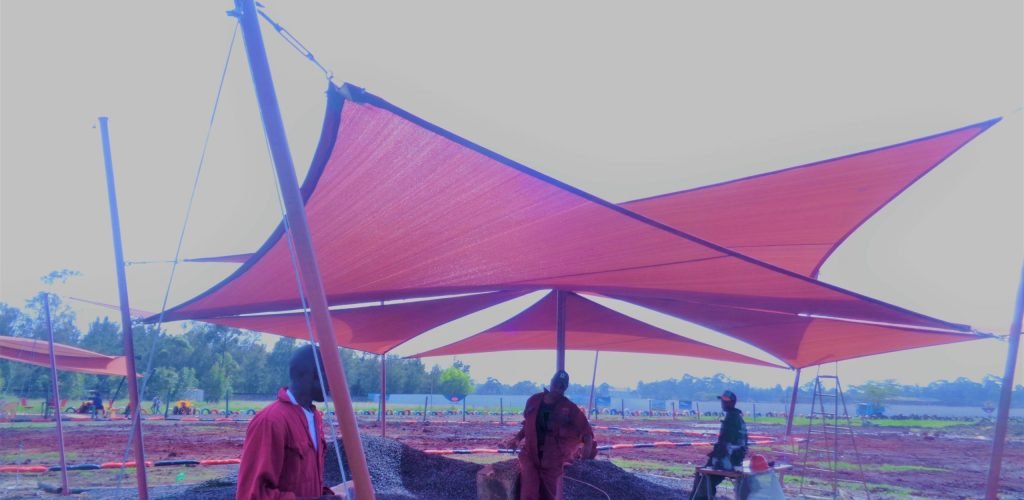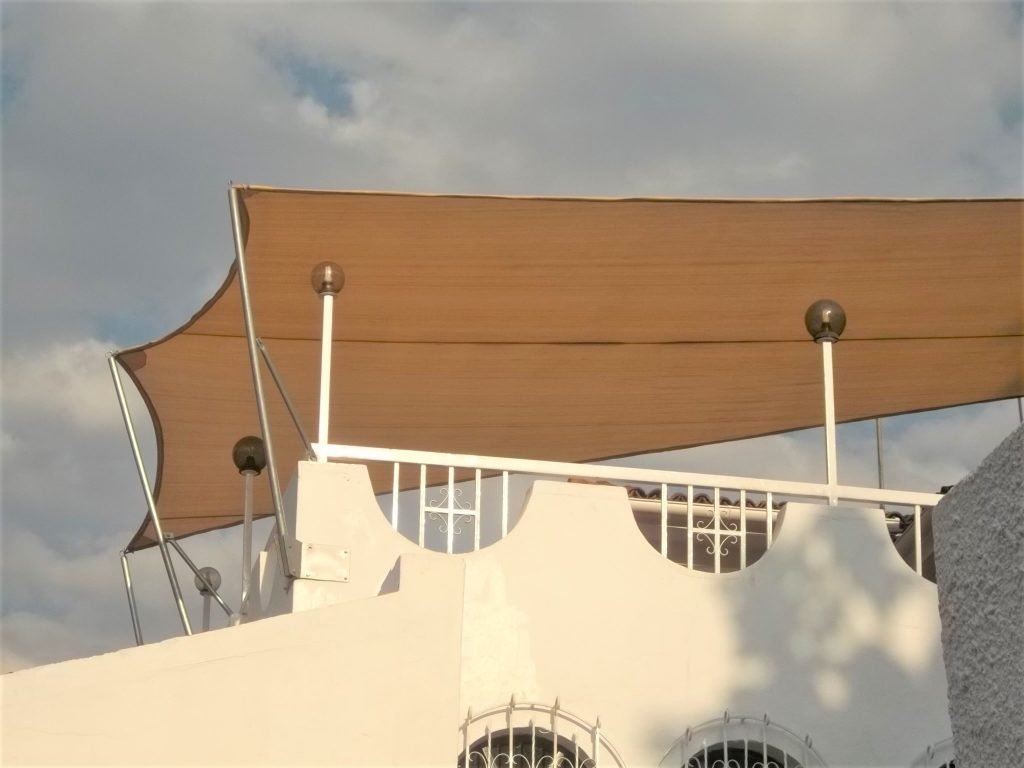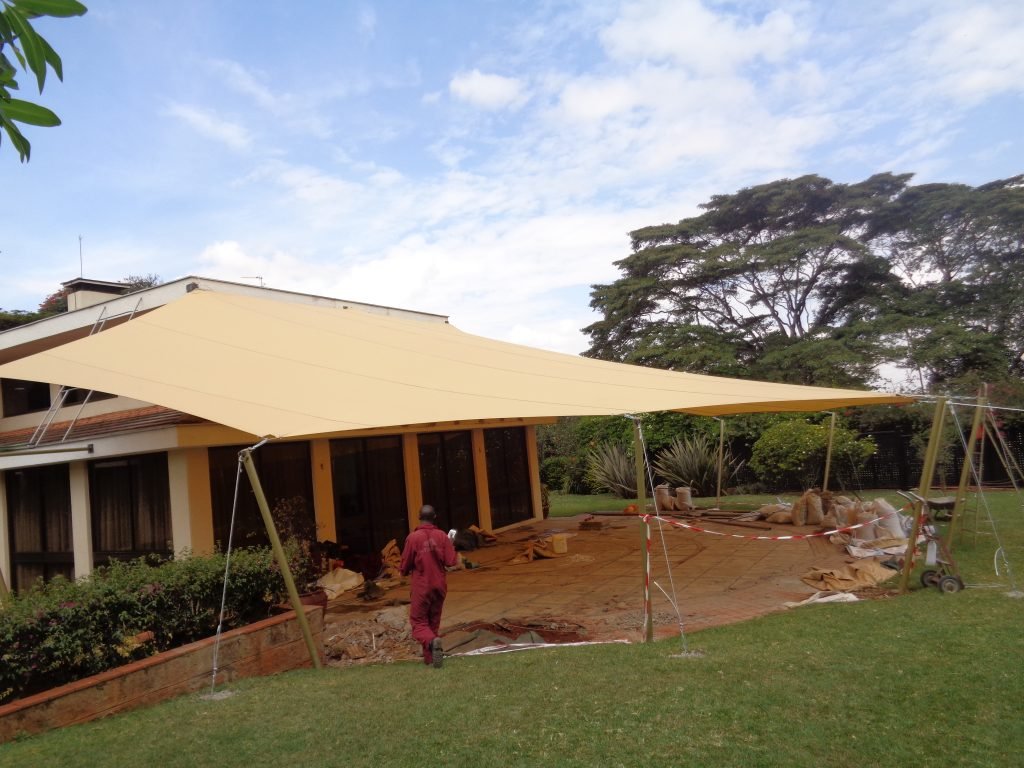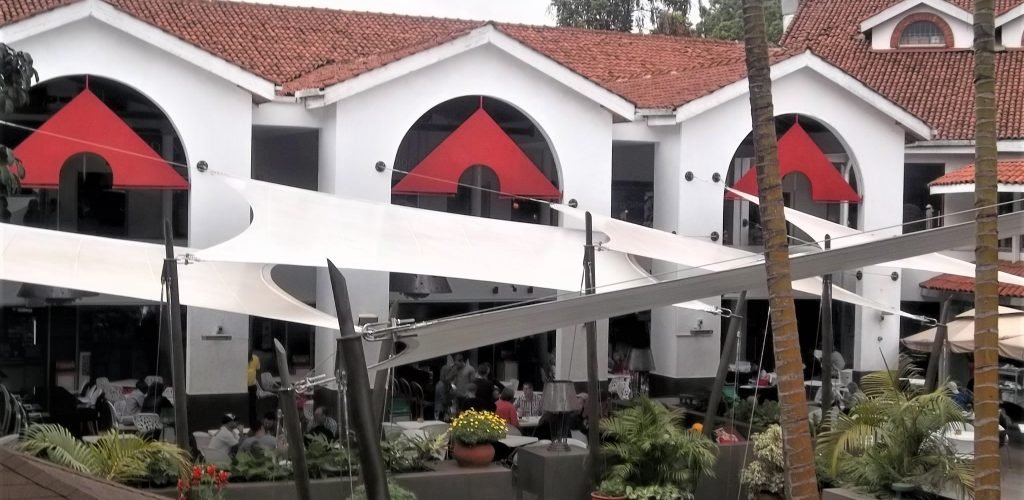Guide to buying a sail shade

Sails are starting to become trendy because they have an aesthetic appeal. Humans love to look at curves and in doing so forget about functionality!
Sails are technically known as tensile shades and fall under the field of tensile architecture – a highly specialized area of engineering. This is the same field of expertise that designs sports stadia and airports with those interesting looks. Behind the looks we have some serious calculations going on – wind loads, tensile strength, curves and deflections and all this influences the choice of fabric that is available.

The first thing you have to be aware of is that tensile shades can get expensive. They require a lot of design time depending on the size, complexity and a lot of other variables. So if you’re going down this route be aware that you may need to budget for it. Because there’s design involved you may end up paying to discover that what you want isn’t within your budget.
Tensile shades aren’t portable. They are tensioned in specific directions and angles to be a permanent feature of the area or property. The specific angles take into account wind loads and direction, angle of sun light, minimum and maximum heights among other details. Since every property or area requiring shade has some uniqueness to it, every shade needs to incorporate the uniqueness and hence custom design plays a big role.
These shades rely on the strength of the fabric and its ability to stretch. Unlike an awning or canopy which needs a structure to sit on, tensile shades ‘hang’ onto the structure. This means the fabric should be ready to be hung and pulled in at least two directions – it will stretch like elastic and retain that taut form for years.
Only PVDF, PVC and Acrylic canvas fabrics have the properties for this. HDPE woven shade netting has been pushed into this category with limited success. Simple form shades that lie on one plane will be fine using acrylic canvas or shadenet – the acrylic canvas will give excellent thermal properties and rain protection. If you want curving forms (pulling in more than two directions) then PVDF or PVC are your only bet – they are engineered for curvature and need high-frequency welding to retain their base properties, strength to be more specific.

Tensile shades can bring some class and elegance to your property! Make sure you invest in the right designer, get guidance on the most suitable fabric to use and trust in the installation team and their technology to realize something you’ll love.
